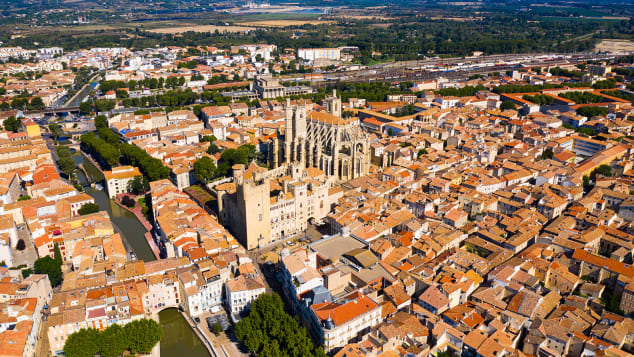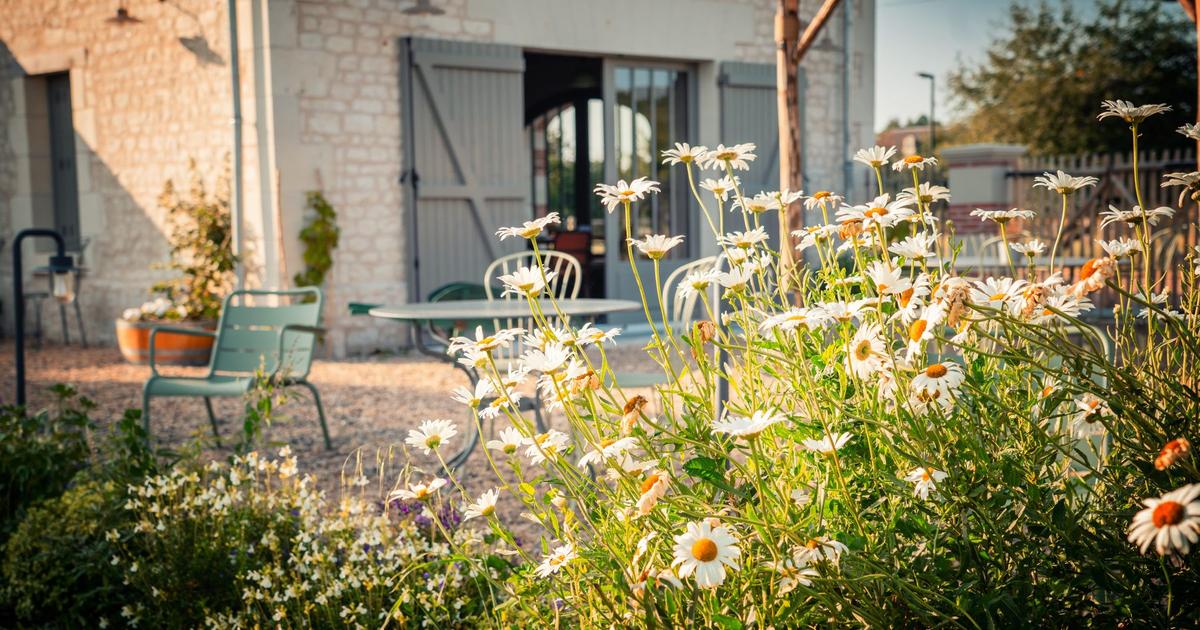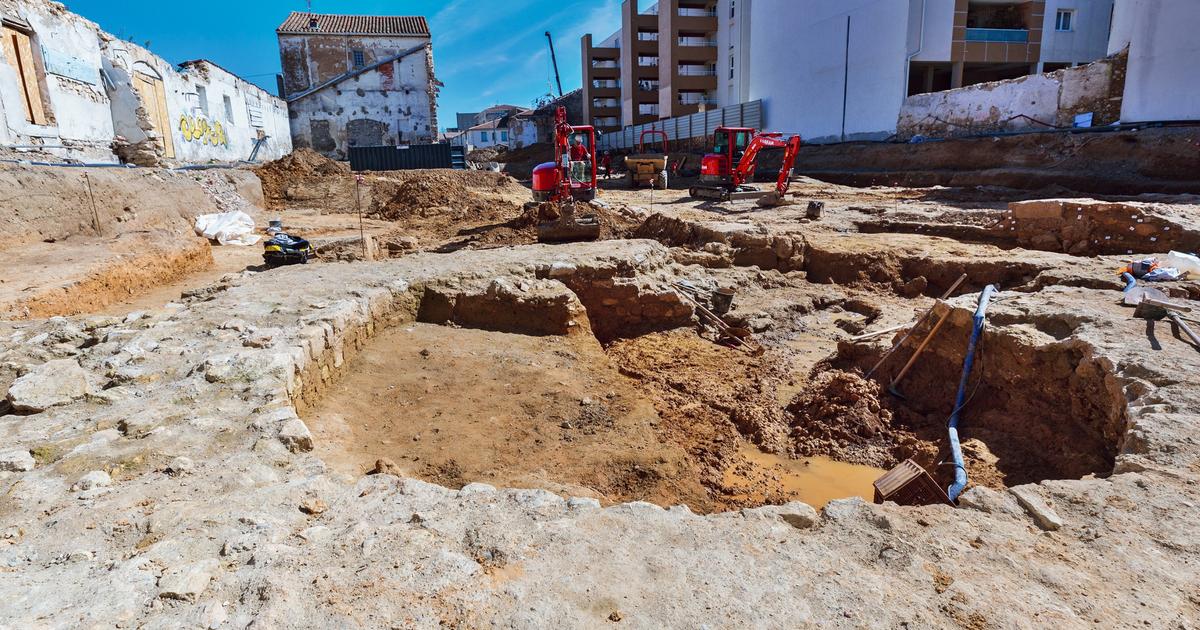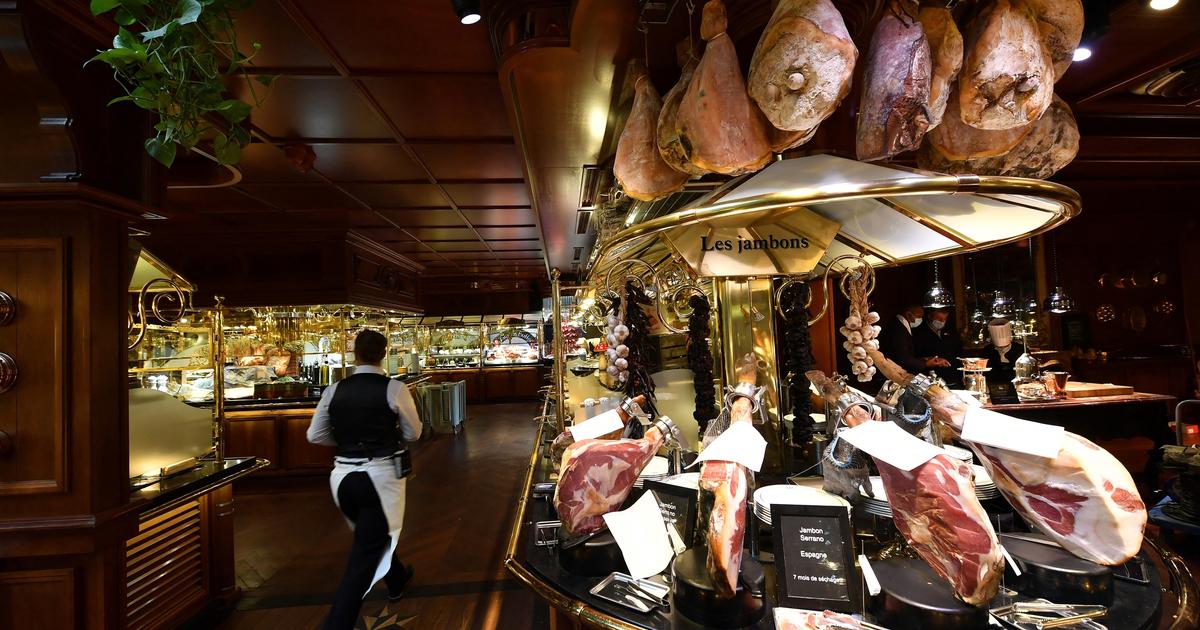(CNN) --
If you think of the south of France, postcard images of the lavender fields of Provence and the most elegant places with yachts probably come to mind: Nice, Cannes and Saint Tropez.
But if you look at a map of France and draw a line down from Paris to the Mediterranean Sea, you'll land in the Occitanie region, where the department of Aude and the coastal city of Narbonne and its environs offer a very different and more relaxed view of the world. South of the country.
Here, along a coastal plain that is part of France's largest wine and vineyard-producing region in terms of area (Languedoc-Roussillon, which became part of the newly created Occitanie region in 2016), the various landscapes range from beaches and shallow lagoons to wooded calcareous plateaus with lakes.
How many kilometers does the Tour de France have?
Let's compare with the Great Wall of China and Chile
Ruined castles and majestic citadels crown the hilltops of what was once Cathar country.
This dissident and ascetic religious group, then considered heretical, congregated in this part of Europe during the 12th century.
Today, visitors flock to the region in search of an atmosphere steeped in tradition and full of surprises, where you can taste seafood from the same lagoons where it is harvested and drink the various Languedoc wines against the backdrop of the Pyrenees that extend towards Spain.
The laid-back seaside towns you'll visit here seem a world away, attitude-wise as well as geographically, from the more pretentious and busy Côte d'Azur, some 360 kilometers to the east.
Narbonne is a city with Roman roots in the Aude department, in the French region of Occitanie.
Credit: JackF/Adobe Stock
A city with a Roman heart and one of the best markets in France
Less than an hour from Narbonne, on the banks of the Aude River, the impressive hilltop fortress city of Carcassonne is what initially attracts most tourists to the region.
An outstanding example of a medieval fortified city, this UNESCO World Heritage-listed city has pre-Roman roots.
advertising
But history also runs deep in the oft-forgotten city of Narbonne, an ancient port city dating back to 118 BC and the first Roman colony established in Gaul.
Gallo-Roman antiquities from the city's original walls and structures, many of which have been gathering dust for decades, are on display at the new Narbo Vía Museum, opening in May 2021.
What happened in Santorini when the tourism "machine" stopped?
The spectacular museum designed by Foster+Partners (of Norman Foster fame) features an industrial-style stacker crane that uses a robotic mechanism to continually shift an imposing display of more than 700 ancient carved stone blocks within its centerpiece" Lapidary Wall".
The Canal du Midi, a 17th-century canal linking the Mediterranean and the Atlantic, flows through the heart of Narbonne, carrying thousands of boat cruise passengers each year on journeys between Sète and Toulouse.
But few disembark to explore beyond the limits of the canal and Carcassonne.
They are definitely missing out.
On the edge of the canal in Narbonne is the city's famous covered market, Les Halles, where the morning hustle and bustle fades at lunchtime, when vendors selling local seafood and vegetables and the famous goat cheeses from Languedoc begin to close their stalls and restaurants fill with diners drinking wine with their midday meal.
"The market is a place where the inhabitants of Narbonne like to develop their social life around a glass of wine," winegrower Gerard Bertrand, whose white, red and rosé wines are a benchmark of heritage, tells CNN Travel. biodynamic and organic wine from Languedoc.
Languedoc-Roussillon became part of Occitanie in 2016. Vineyards cover part of the landscape.
Credit: creativenature.nl/Adobe Stock
History of the evolution of viticulture
Although vines have been rooted in the Languedoc region for thousands of years, Narbonne was the first port through which wine was shipped through the Roman Empire.
Bertrand says that the region ended up "losing its nobility, often favoring volume over quality."
Regions like Champagne, Burgundy and Bordeaux came to the fore.
But since the 1970s, says Bordeaux winemaker Sera Goto, great care has been taken to replant varietals adapted to the particular microclimates and soils of the Languedoc-Roussillon vineyards that "maintain great respect for the environment."
New Zealand to launch world's first 'wine airline'
The region is a "multicolored, textured and dynamic zone, with a dizzying diversity of soils, varietals and wine styles," he says, and one of the most important organic wine-producing areas in France.
"The Languedoc Roussillon, which in its day was dedicated exclusively to the production of mass-produced wines for the tables of the ancient Greeks, Romans and, later, Gauls, is today, in many ways, a benchmark for organic and artisanal wine" Goto says.
This is due in no small part to the practices of visionary winegrowers like Bertrand, a former professional rugby player who took over his father's business in 1987 and incorporates fully biodynamic farming practices into his 16 vineyards in the region.
Château l'Hospitalet is a seaside winery and boutique hotel set amongst the vineyards of the La Clape appellation.
Credit: Gilles Deschamps
His Château l'Hospitalet Grand Vin Rouge 2017 was named the best red wine in the world in a blind tasting of 6,000 wines during the International Wine Challenge in 2019.
"The future of our region looks bright," says Bertrand.
"There has been a shift towards new generations of viticulturists who are fully dedicated to appreciating the wonderful nature that we have here."
As for human nature, you can develop your own social life alongside the wines of the region with lunch at Les Halles, in Narbonne, at Chez Bebelle, where tables are set up inside the market itself.
People often stand, carrying shopping bags of fresh produce, clinking glasses and ordering specialties such as steak tartare and duck breast to comment on the latest rugby match and other important events in the city.
British royal ship found 340 years after sinking, with wine bottles intact
Vineyards and lagoons where to stay and drink
If you want to stay among the biodynamic vineyards near Narbonne, the Château l'Hospitalet de Bertrand is a peaceful refuge among the vineyards of the La Clape appellation.
Housed in a former 11th-century hospital, this seaside winery and boutique hotel boasts a new gastronomic restaurant, L'Art de Vivre, offering seasonal and organic produce, as well as Aubrac beef and eel from nearby Étang de l'Ayrolle, in Gruissan.
In addition to the castle rooms, Villa Soleilla has 11 suites and a new spa in its collection of contemporary-style buildings restored from the original walls of an old cellar.
Rooms with private patios and terraces open up to views of the surrounding vineyards and the dazzling Mediterranean Sea.
During the warmer months, the hotel's beach club and seaside restaurant, located a few minutes' drive away in nearby Gruissan, evoke the Côte d'Azur's sun-and-sea vibe, but without pretense.
A beach club and seaside restaurant in nearby Gruissan are part of Château l'Hospitalet's summer offerings.
Credit: EO CREATIVE @FlorianVidot
Year-round in the region, you can wander the uncrowded sands of Gruissan, hike through vineyards to a coastline where more sails flutter than superyachts, and hike to unexpected views at the Gouffre de l'Oeil. Doux, an emerald-colored pool in a karst that looks a lot like a Mexican cenote.
At the Salin de Gruissan, near the fishing village of Gruissan, the lagoons where sea salt is grown take on a pinkish hue due to the presence of an algae that reacts to sunlight.
Flamingos stalk the shallow ponds closest to the sea and fleur de sel is hand-picked and sold in a small local boutique.
On the shore of the lagoon, massages and salt immersion treatments are offered inside a humble roulotte, a small wooden carriage that looks like a portable sauna and overlooks the salt production basins.
An installation with an unpretentious atmosphere of well-being and where nothing else is needed.
Also by the lagoon, at La Cambuse du Saunier, platters of oysters, sea snails, shrimp and couteaux -- clams with a thick garlic and parsley sauce -- are served on rustic driftwood tables in a restaurant without pretentious and surely has the freshest seafood in France.
La Cambuse du Saunier, near Gruissan, serves fresh seafood on rustic driftwood tables by the water.
Credit: Terry Ward
Nearby, in the medieval village of Bages, in the Étang de Bages, kite surfers jump over the choppy surface of a windy lagoon famous for harvesting silver eels.
They can be tasted in various preparations in the former fisherman's dwelling converted into a restaurant, Le Portanel.
Oyster lovers make a pilgrimage northeast of Narbonne along the coast to the neighboring department of Hérault and the seaside town of Marseillan.
There the Tarbouriech (or "pink oysters") are grown on ropes that are raised and lowered from the water of the largest lagoon in France, the Étang de Thau.
The process allows farmers to adjust the salinity level of the oysters in an area with salty waters and almost no tidal variation.
An oyster platter served alfresco alongside a glass of rosé overlooking Tarbouriech Le St. Barth's lagoon distills the essence of the region's flavor.
And the best?
That "unassuming" thing.
You can arrive as is at any of these places, dressed in whatever you wore that morning for sightseeing.
The city of Gruissan is located along the Mediterranean coast, about 15 kilometers southeast of Narbonne.
Credit: Boris Stroujko/Adobe Stock
A region to discover... that is being discovered
"You just have to open one door in this region, and then there's another," says Gilles Sansa, whose private chauffeur company, Quadriges, guides tourists, Hollywood crews (scenes from "The Last Duel" were recently shot in the 11th century Abbey of Fontfroid) and anyone who wants to know the secondary roads and the secrets of the area.
"When Americans come here, they have a purpose, a goal," says Sansa.
"They know that there is good food and wine, first of all. But then they really discover the essence of the place and something different."
For many Europeans, the region's appeal is less secret, and both foreign and French interest in real estate has soared during the pandemic, says Nathalie Van Veenendaal, regional director at French real estate agency Selection Habitat. -Hamilton.
Van Veenendaal describes the property market as a "back-to-the-country vibe" that is attracting more interest from the French and residents from other parts of Europe to an area that has traditionally attracted many Britons.
"It is this combination of sea, mountain and countryside together with the quality of life that attracts people," says Van Veenendaal.
"It's less about showing off your big property here than it is on the Côte d'Azur and more about these other things."
France


/cloudfront-eu-central-1.images.arcpublishing.com/prisa/DWNMLKJJCJB7TBU7EWSPPPIT6Y.jpg)












